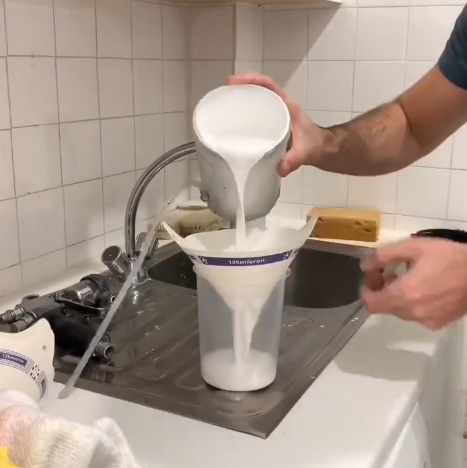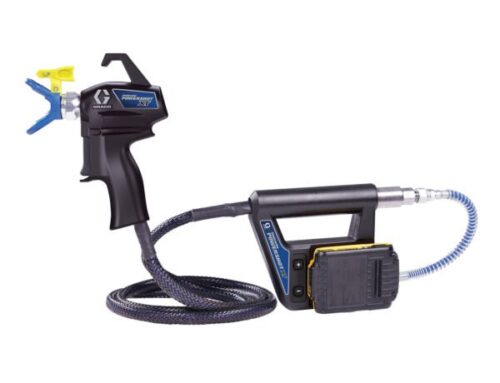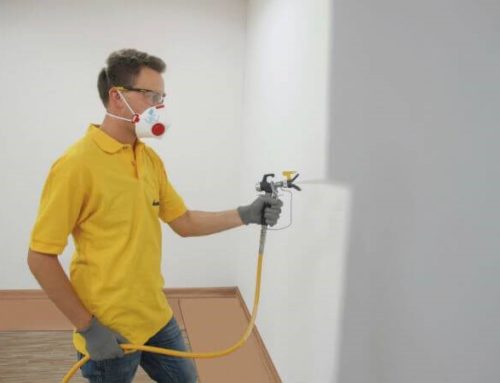Each paint, depending on the materials used, has its own viscosity. If you work with a sprayer, it is preferable to know the thickness of the paint used to avoid certain inconveniences.
We summarize for you here the main information concerning the viscosity of the paint, how to measure it and the settings for an optimal use of your paint station.

Definition of paint viscosity
The viscosity of a material can be defined by its consistency according to its flow velocity. According to Wikipedia, “As viscosity increases, and the fluid’s ability to flow easily decreases, so does the energy dissipated by the flow.”
The ease of application of a paint therefore depends on its viscosity, which we will develop in the next paragraphs.

Measuring the viscosity of a paint
Some spray guns or paint turbines come with a viscosity tester in the shape of a cup: this small tool is called a viscometer. The viscosity of a paint is measured with the viscometer, which takes this friction into account. Basically, the more the viscosity of the material increases, the more the capacity of the fluid to flow easily will decrease.
The principle is to measure the flow time of the paint ready to use. Simply fill the cup with paint or dip it into the paint can and measure the flow time to make the adjustment. Fill the cup to the brim and then count the number of seconds until it empties completely.
Refer to your gun’s instruction manual after the test to see if your machine can handle the viscosity level of the paint you are about to use. Usually the paint gun or viscometer comes with a viscosity measurement chart. A little more information about the viscosity meter can be found in the following video.
Settings for spray painting
There are several parameters to consider when setting up your spray gun.
First help: the material data sheet
We can’t stress this enough, but every paint manufacturer knows their products best. As a result, the paint data sheet is full of useful information about the thickness of a material and its sprayability.
If you’re lucky, the data sheet should have at least the nozzle size, recommended pressure and dilution, and even viscosity information.
The percentage of dilution
Some paints are sold as airless paint, which means they are ready to use and do not require thinning. But in general, you can thin a conventional paint to 5-10% to make it easier to apply with an airless gun.
If the paint is not liquid enough, dilute it with the appropriate material according to the manufacturer’s instructions on the paint can:
- Thinning water-based paint (acrylic, vinyl or alkyd) with water.
- Thinning of oil-based paint (glycerol, epoxy or polyurethane) with the appropriate solvent, indicated by the manufacturer.
If the paint is too liquid after dilution, add undiluted paint to your mixture.
The size of the nozzle
The viscosity of the material and the solids content are important when selecting the bore, i.e. the nozzle opening. If the sprayed material is too thick, i.e. too viscous, the nozzle will immediately clog and work will be impossible. But the solids content also plays a role.
In paints, varnishes and coatings, there are fillers and components of different sizes. If these components are larger, the nozzle bore must also be large enough to allow these solids to pass through and to prevent the nozzle from clogging.
A good example to illustrate this is silicate paint, which has a high mineral content and therefore requires larger nozzle bores.

Nozzle bore from smallest to largest depending on the material to be applied
To summarize, a varnish will generally be more fluid than a wall paint: the nozzle opening will therefore be smaller in this case since the viscosity of the material is very low.
To help you in this selection, see our article on how to choose the right size of airless nozzle.
The filtration process
Finally, this last technical aid is very handy if you are using small pots of paint or varnish.
You can filter the material using a paper filter like the one shown in the video by French Renovation.
It is also possible to gently heat your paint in a water bath to thin it.
This of course only works for small pots of paint.
Love our content ? You can find more here:
Check out our Airless Discounter YouTube channel
Airless Discounter Instagram account
Questions or queries ?
For any further questions or if you would like to get your hands on one of these products seen in this article, you can contact us on +49 (0) 30 220 15436, fill out our contact form or email us.
If you wish to purchase one of the products mentioned above, you can check them out in our online store.
You can also visit us at our service base during office hours.









